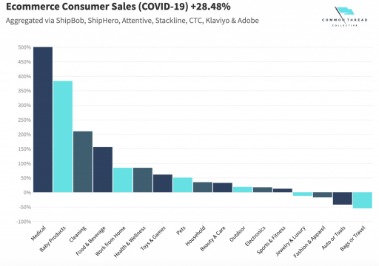

Businesses are generally advised to reconcile their accounts at least monthly, but they can do so as often as they wish. Businesses that follow a risk-based approach to reconciliation will reconcile certain accounts more frequently than others, based on their greater likelihood of error. Upon investigation, the company discovers an accounting error where a zero was omitted and rectifies the record to bring the revenue value to $45 million, which is close to the estimated revenue projected. Accountants then make research, investigate, and take appropriate actions to correct the discrepancies. As noted earlier, discrepancies are caused by various factors like timing differences, missing transactions, mistakes, or fraud, among others.
- It is reimbursed for the incorrect deductions and rectification of these transactions brings consistency and accuracy to the receipts account, bank statement balance, and cash book balance.
- For small businesses, the main goal of reconciling your bank statement is to ensure that the recorded balance of your business and the recorded balance of the bank match up.
- It’s important to keep in mind that consumers have more protections under federal law in terms of their bank accounts than businesses.
- For lawyers, this process helps to ensure accuracy, consistency, transparency, and compliance.
If there are receipts recorded in the internal register and missing in the bank statement, add the transactions to the bank statement. Consequently, any transactions recorded in the bank statement and missing in the cash register should be added to the register. Conversely, identify any charges appearing in the bank statement but that have not been captured in the internal cash register. Some of the possible charges include ATM transaction charges, check-printing fees, overdrafts, bank interest, etc.
Direct and Indirect Cash Flow
Using a double-entry accounting system, as shown below, ABC credits cash for $2,000 and debits assets, which is the equipment, by the same amount. For the first job, ABC credits $500 in revenue and debits the same amount for accounts receivable. This software automatically collects data from a company’s various sources of financial information stored digitally across various platforms.
Check For Accurate and Consistent Balances


Additionally, reconciling accounts on time consistently is also essential to maintaining financial integrity. If the indirect method is used, the cash flow from the operations section is already presented as a reconciliation of the three financial statements. Other reconciliations turn non-GAAP measures, such as earnings what does an accountant do roles responsibilities and trends before interest, taxes, depreciation, and amortization (EBITDA), into their GAAP-approved counterparts.
The Reconciliation Process
Reconciliation in accounting is the process of reconciling the balance between two different sets of documents. Unfortunately, many businesses tend to overlook this very important process, which leaves their business vulnerable to costly errors and even fraud. And, because Clio integrates with best-in-class accounting tools like QuickBooks and Xero, you can use them together to further simplify reconciliations. When using Clio together with these integrated accounting solutions, trust account updates made in Clio are then automatically updated in QuickBooks or Xero.
For lawyers, this process helps to ensure accuracy, consistency, transparency, and compliance. The purpose of reconciliation is to ensure the accuracy and ethics of a business’s financial records by comparing internal accounting records with external sources, such as bank records. This process helps detect errors, prevent fraud, ensure regulatory compliance, and provide reliable financial information for data-driven decision-making. Account reconciliation is necessary for asset, liability, and equity accounts since their balances are carried forward every year.
Simply knowing how to properly reconcile an account can prove essential to your financial health as it ensures your financial records are always accurate. For small businesses, the main how to prepare a balance sheet goal of reconciling your bank statement is to ensure that the recorded balance of your business and the recorded balance of the bank match up. General ledger reconciliation, where accountants check the accuracy of the company’s account balances at the end of an accounting period, ensures the accuracy of financial statements. Account reconciliation is done to ensure that account balances are correct at the end of an accounting period. The account reconciliation process also helps to identify any outstanding items that need to be taken into consideration in the reconciliation process. Take note that you may need to keep an eye out for transactions that may not match immediately between the sets of records for which you may need to make adjustments due to timing differences.
Although these do not occur very often, where they are spotted, you make amendments in the bank account statement, either by additions or subtractions. Nonetheless, account reconciliation, in this case, bank account reconciliation, works in the following ways. Account reconciliation aims to take care of inconsistencies in accounting records, with these inconsistencies undoubtedly caused by certain factors. Overall, account reconciliation plays an important role in a company’s risk management framework relating to accounting. This act mandates public companies to include an assessment of their internal controls over financial reporting with their annual report for the period.
Time lag causes inconsistencies in different accounting records and account reconciliation helps to take care of them. Thankfully, today, transactions are instantaneously communicated within minutes or hours between different records rather than days or weeks. From the definition, one very clear and important use of account reconciliation is to prevent errors in financial accounting activities. Learn which general ledger accounts should be reconciled regularly, and key things to look for during the account reconciliation process. By identifying and resolving these differences, businesses ensure their financial records are accurate and up-to-date. Using accounting software will make it much easier to reconcile your balance sheet accounts regularly.
Rectifying the bank errors bring the bank statement balance and the cash book balance into an agreement. These charges include uncleared checks, internally recorded auto-payments that have not been deducted, ATM service charges, insufficient funds (NSF) charges, overdraft charges, or over-limit fees, among others. You then subtract these from your bank statement balance where they have not been reflected. Alongside human-based accounting activities, a lot of companies depository definition make use of open source accounting software to record transactions and reconcile differences between different statements or documents.






